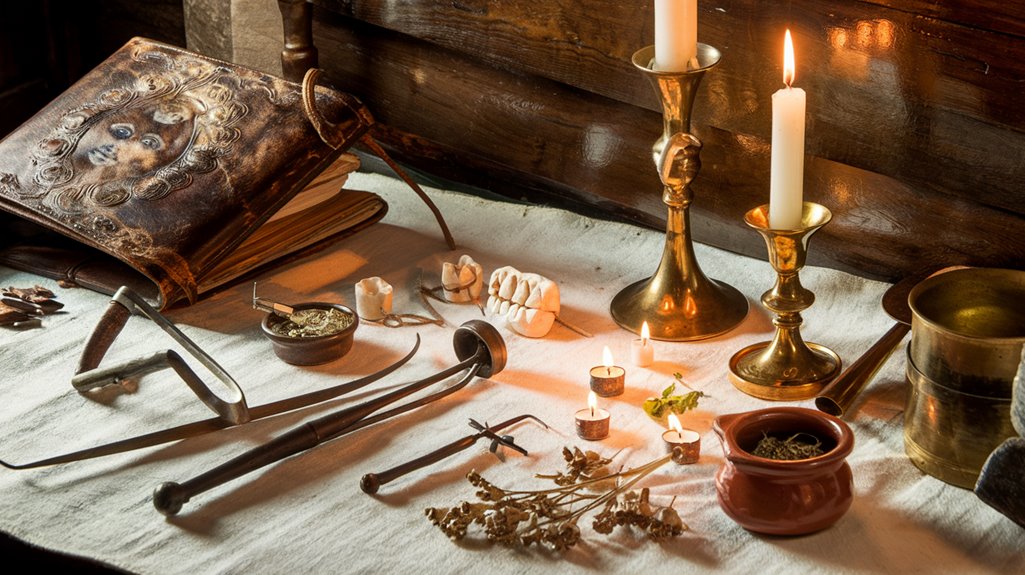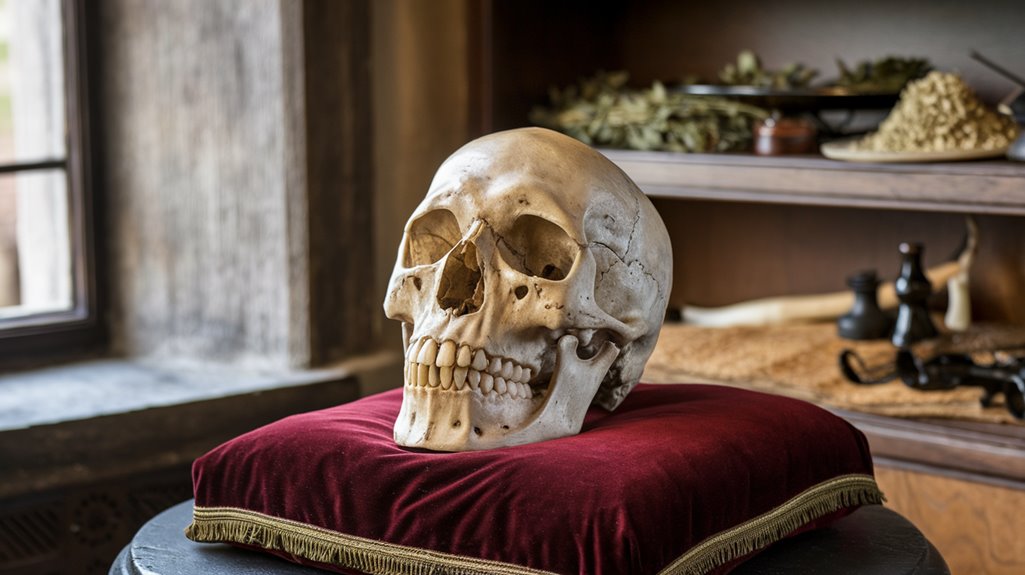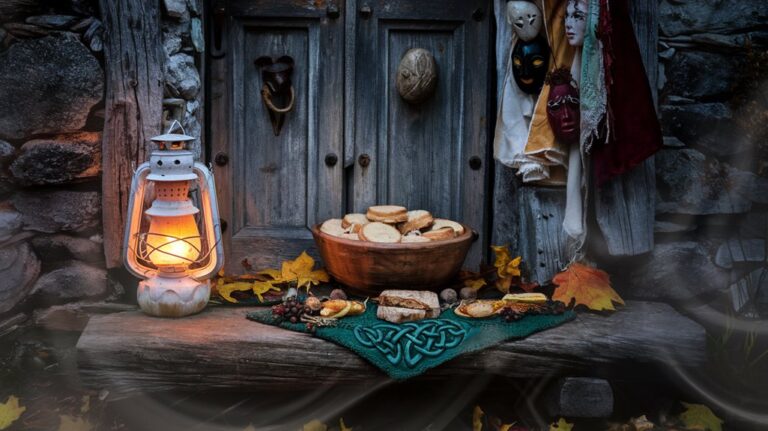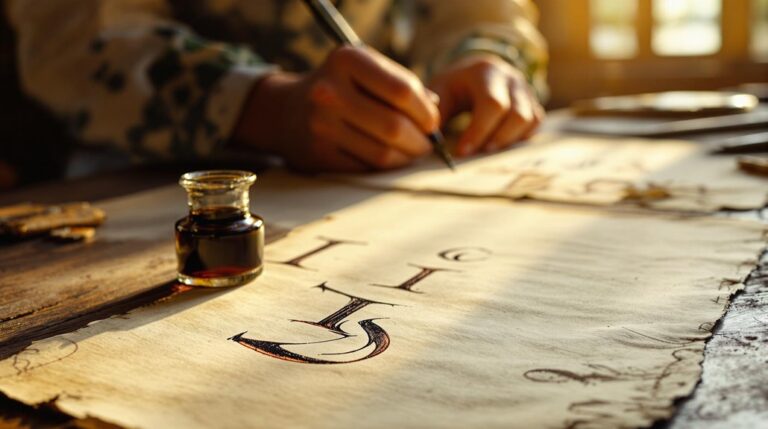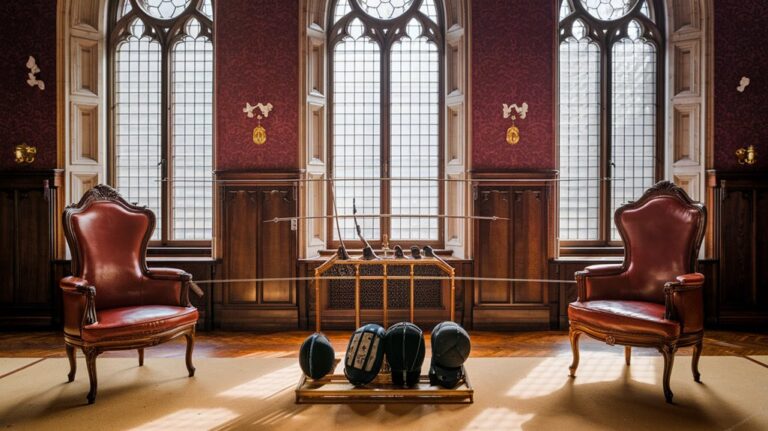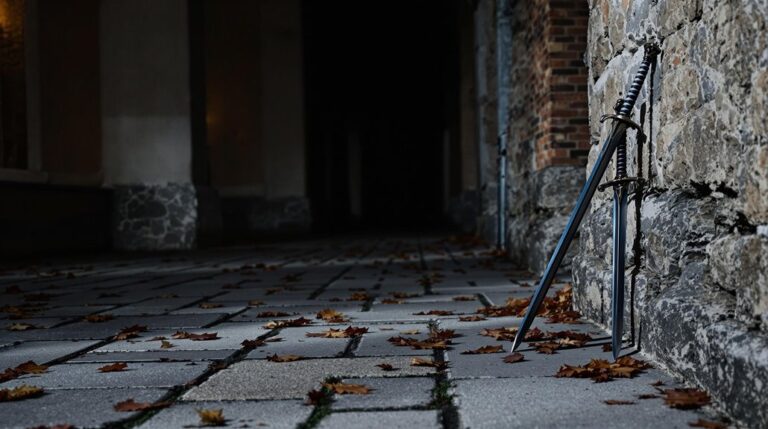Medieval People’s Teeth: Were They Really That Bad?
You'll be surprised to learn that your medieval ancestors might have had healthier teeth than your great-grandparents. While popular culture depicts medieval people with rotting, blackened smiles, archaeological evidence tells a different story. Only 20% of medieval teeth showed decay, compared to a staggering 90% in the early 1900s. This stark contrast raises an intriguing question: what did medieval people know about dental health that we've forgotten, and how did modern dietary changes lead us astray?
The Medieval Diet: A Natural Shield Against Tooth Decay
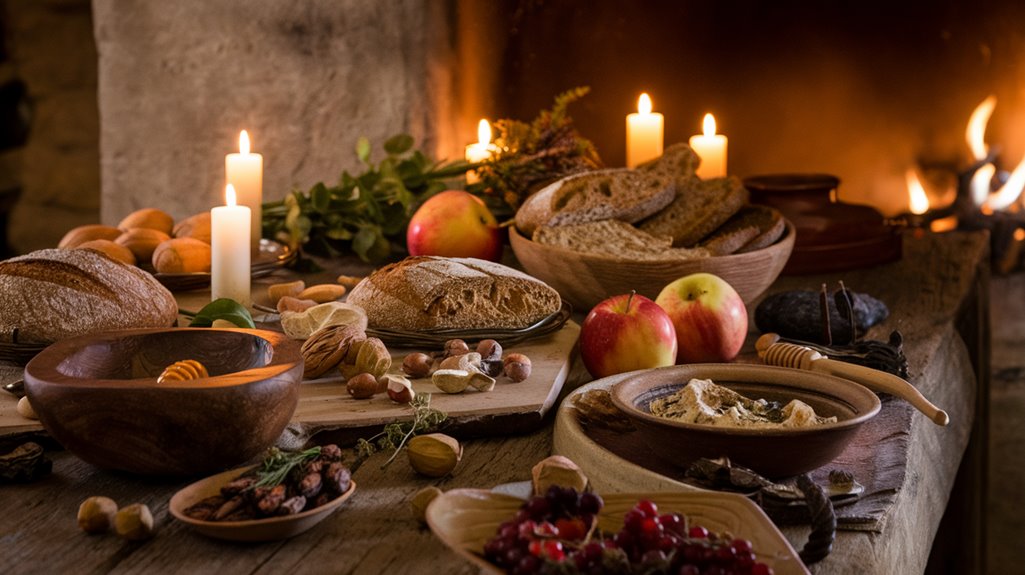
While modern diets often lead to widespread tooth decay, medieval people surprisingly maintained healthier teeth thanks to their natural diet. Their dietary diversity included fruits, vegetables, and dairy products, providing essential nutrients that promoted strong teeth.
You'll find it interesting that only 20% of medieval teeth showed decay, compared to today's much higher rates.
The nutrient balance in medieval diets was particularly beneficial for dental health. They consumed natural sugars from fruits and honey, rather than refined sugar, which was scarce and mostly limited to the wealthy. Research shows that wealthy royals' teeth were often in worse condition due to their greater access to sugary foods.
Even their stone-ground grain processing had unexpected benefits – while it caused some tooth wear, it actually helped prevent decay by smoothing out deep crevices where bacteria could hide.
People often cleaned their teeth using rough linen cloths and natural mixtures, demonstrating a surprisingly sophisticated approach to dental hygiene.
Medieval Dental Care: Ancient Wisdom and Natural Remedies
Three distinct approaches formed the foundation of medieval dental care: herbal remedies, manual cleaning, and primitive surgical procedures. People commonly used linen cloth cleaning to maintain oral hygiene despite lacking modern toothbrushes. Without regular professional dental care in ancient cultures, people experienced significant tooth decay. If you'd lived during medieval
Debunking the Myth of Bad Medieval Teeth
Despite popular misconceptions about rotting medieval teeth, archaeological evidence reveals a surprising truth: medieval populations often had healthier teeth than their 19th-century counterparts. You'll find that only 68% of medieval peasants had cavities, compared to 79% in the 1800s, challenging Hollywood's portrayal of universally blackened teeth.
While medieval dental hygiene practices were basic, their diet played a significant role in maintaining oral health. The absence of refined sugar, combined with a menu rich in vegetables and high-fiber foods, protected their teeth naturally. They commonly used cloves and cinnamon in their tooth-cleaning pastes to maintain oral hygiene. Studies show that sugar was rare and only accessible to wealthy aristocrats during this period.
Though they faced issues like tooth wear from coarse bread and lacked professional dental care, their overall oral health was remarkably good. This historical accuracy forces us to reconsider our assumptions about medieval dental health and highlights sugar's devastating impact on modern teeth.
The Sugar Revolution: How Modern Diets Changed Dental Health
The introduction of refined sugar marked a turning point in human dental health, dramatically reversing the advantages medieval populations once enjoyed.
While medieval people managed their oral hygiene with simple tools like herbs, twigs, and toothpicks, their limited sugar consumption protected their teeth. You might be surprised to learn that it wasn't until sugar became widely available that dental health began to decline considerably.
This was particularly evident in early modern England, where the nobility's high sugar consumption led to severe tooth decay. Research shows that implementing a 20% SSB tax could significantly reduce tooth decay and dental problems in modern populations.
Today, you're facing an even greater challenge. The sugar industry's influence on research has historically downplayed sugar's role in tooth decay, while modern processed foods and drinks fuel a global oral health crisis.
You're consuming far more sugar than your medieval ancestors ever did, leading to unprecedented dental health challenges.
Archaeological Evidence: What Medieval Teeth Tell Us Today
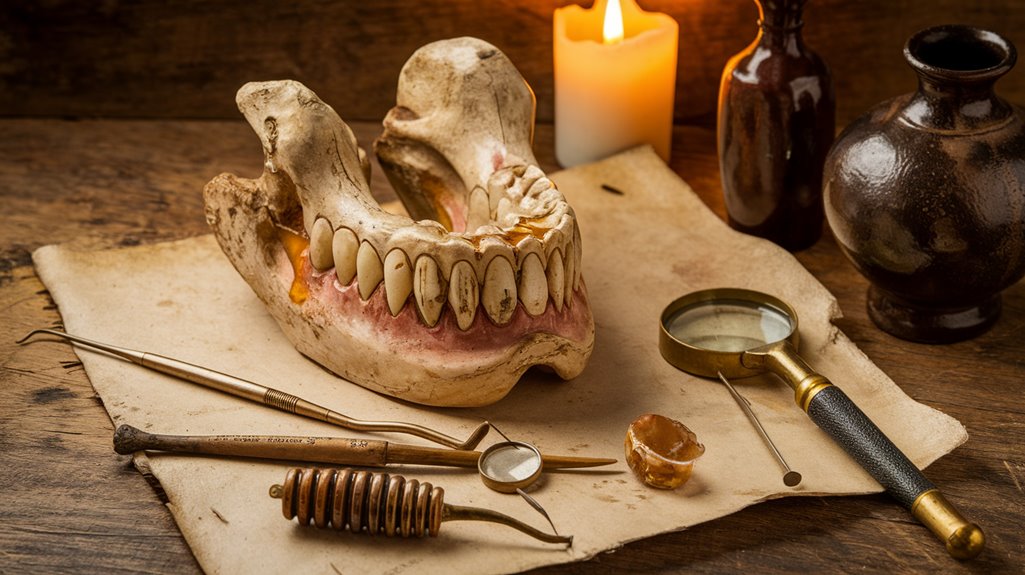
Archaeological discoveries paint a surprising picture of medieval dental health, challenging our modern assumptions about the past. When you look at archaeological findings from medieval burial sites, you'll find that only 20% of teeth showed decay – a stark contrast to the early 20th century, where 90% of teeth were affected.
Many people cleaned their teeth by using wooden toothbrushes as part of their daily routine. The dental patterns revealed at sites like Wharram Percy in Yorkshire tell a complex story. While 68% of peasants there had cavities, their teeth often showed significant wear from coarse bread and tough vegetables. Many medieval individuals maintained oral hygiene by using natural fresh mint to freshen their breath.
This wear, caused by stone-ground grain and dietary grit, could actually help prevent decay by eliminating deep crevices where bacteria thrive. However, without professional dental care, these worn teeth would eventually become covered in calculus, leading to other oral health issues.

